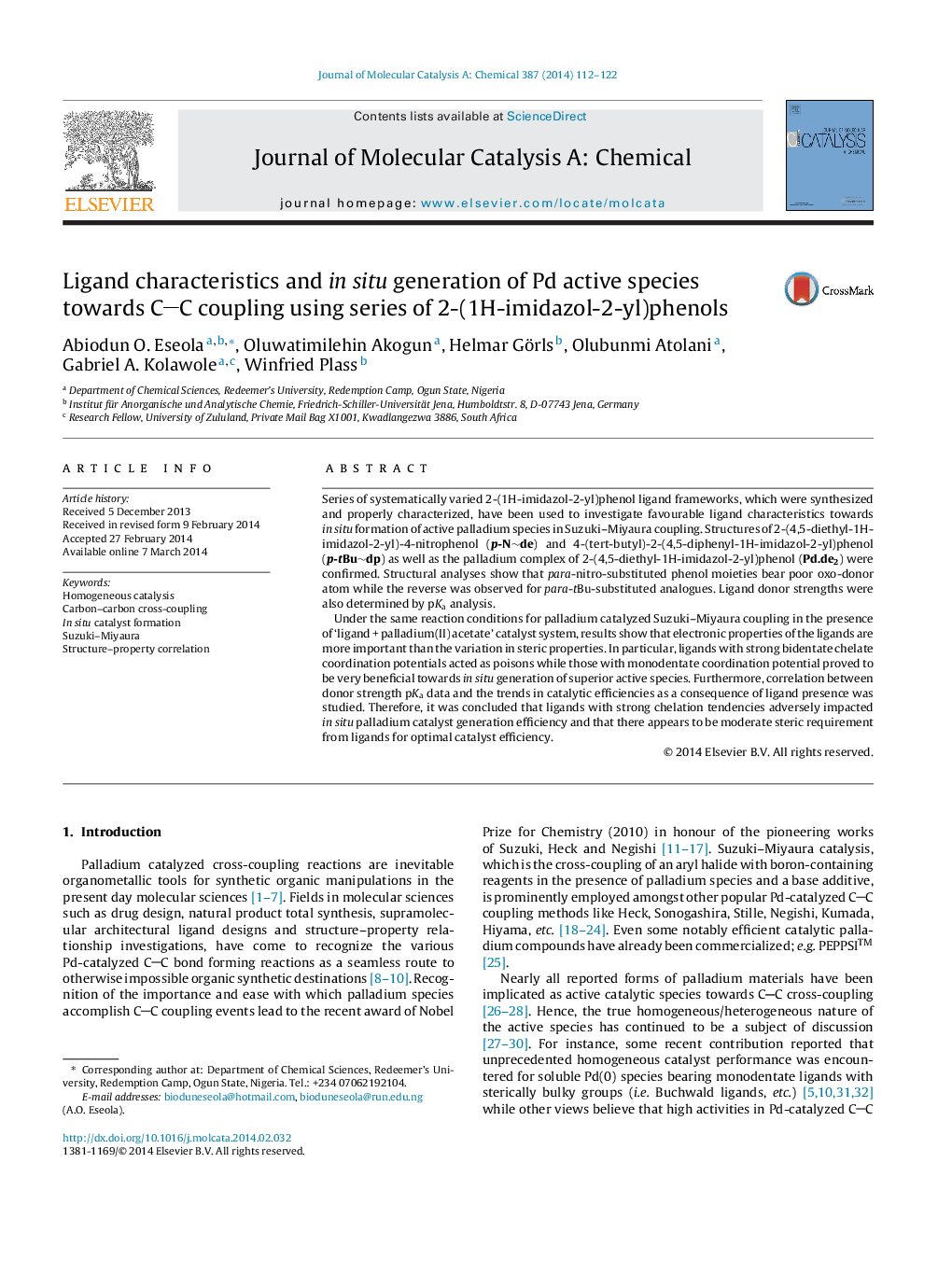| Article ID | Journal | Published Year | Pages | File Type |
|---|---|---|---|---|
| 65454 | Journal of Molecular Catalysis A: Chemical | 2014 | 11 Pages |
•Structural and pKa data revealed hemilability for the investigated compounds.•Ligand electronic properties are more important than steric bulk.•Ligands with chelate coordination potentials poised the active metal centre.•Ligands with monodentate coordination tendencies proved to be very beneficial.•The in situ catalyst generation strongly depends on coordinating species.
Series of systematically varied 2-(1H-imidazol-2-yl)phenol ligand frameworks, which were synthesized and properly characterized, have been used to investigate favourable ligand characteristics towards in situ formation of active palladium species in Suzuki–Miyaura coupling. Structures of 2-(4,5-diethyl-1H-imidazol-2-yl)-4-nitrophenol (p-N∼de) and 4-(tert-butyl)-2-(4,5-diphenyl-1H-imidazol-2-yl)phenol (p-tBu∼dp) as well as the palladium complex of 2-(4,5-diethyl-1H-imidazol-2-yl)phenol (Pd.de2) were confirmed. Structural analyses show that para-nitro-substituted phenol moieties bear poor oxo-donor atom while the reverse was observed for para-tBu-substituted analogues. Ligand donor strengths were also determined by pKa analysis.Under the same reaction conditions for palladium catalyzed Suzuki–Miyaura coupling in the presence of ‘ligand + palladium(II) acetate’ catalyst system, results show that electronic properties of the ligands are more important than the variation in steric properties. In particular, ligands with strong bidentate chelate coordination potentials acted as poisons while those with monodentate coordination potential proved to be very beneficial towards in situ generation of superior active species. Furthermore, correlation between donor strength pKa data and the trends in catalytic efficiencies as a consequence of ligand presence was studied. Therefore, it was concluded that ligands with strong chelation tendencies adversely impacted in situ palladium catalyst generation efficiency and that there appears to be moderate steric requirement from ligands for optimal catalyst efficiency.
Graphical abstractFigure optionsDownload full-size imageDownload high-quality image (229 K)Download as PowerPoint slide
